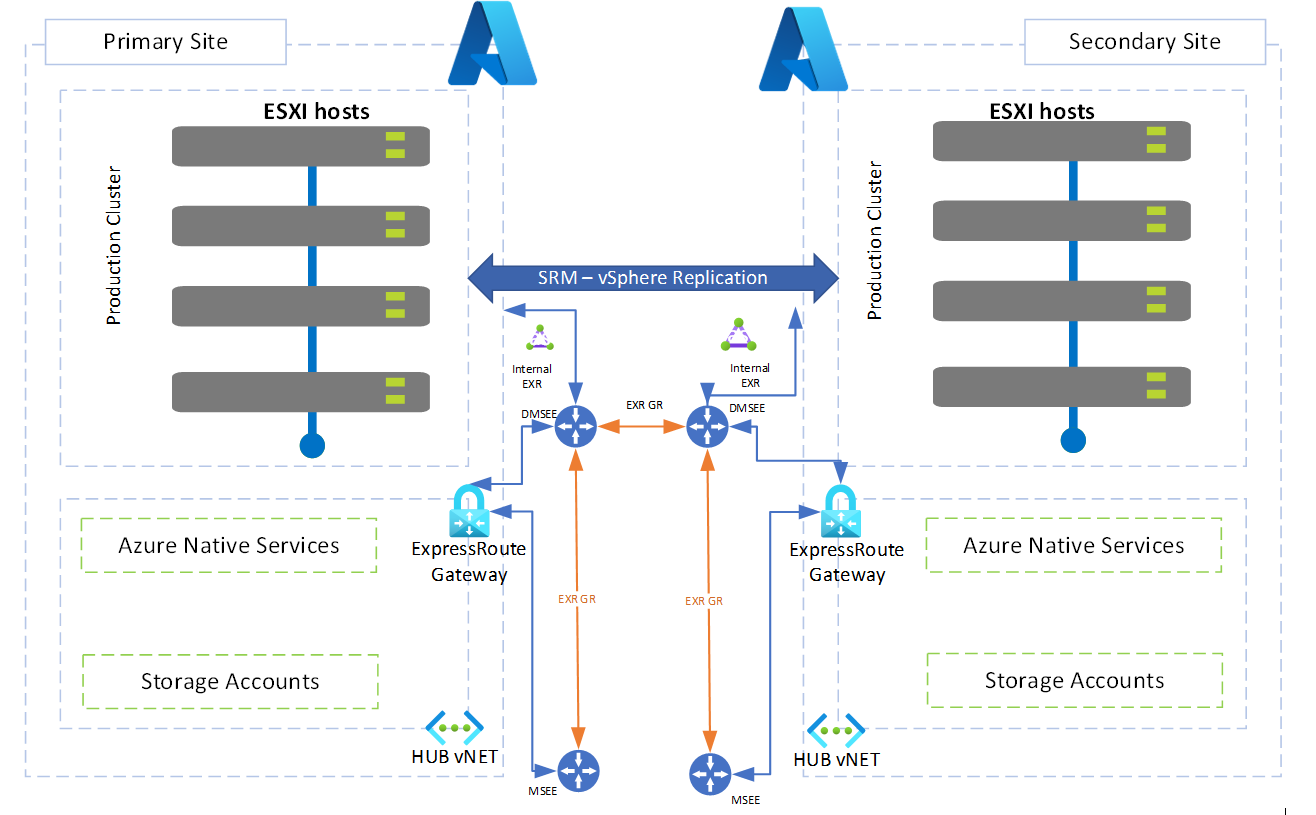VMware Site Recovery Manager is now Available for Azure VMware Solution

Co-Authored: Sai Chaitanya, Principal Lead Program Manager, Azure VMware Solution, Microsoft
VMware Site Recovery Manager (SRM) is a disaster recovery solution that enables customers to minimize downtime of their virtual machines in case of a disaster. SRM has been a popular solution for customers with on-premises VMware environments, and with this announcement, customers can now leverage those same capabilities with Azure VMware Solution. SRM for AVS automates and orchestrates failover and failback between an on-premises environment and AVS, or between two AVS sites, ensuring protection from a disaster. In addition, built-in non-disruptive testing ensures recovery time objectives are met. Overall, SRM for AVS simplifies management through automation and ensures fast and highly predictable recovery times.
SRM helps you plan, test, and run the recovery of VMs between a protected vCenter Server site and a recovery vCenter Server site. You can use SRM with Azure VMware Solution with the following two DR scenarios:
- On-premises VMware to Azure VMware Solution disaster recovery.
- Primary Azure VMware Solution to Secondary Azure VMware Solution private cloud disaster recovery.
The diagram shows the deployment of the primary Azure VMware Solution to secondary Azure VMware Solution scenario.
SRM is licensed and supported directly from VMware. Customers cannot reuse existing on-premises SRM licenses in AVS environments and are required to purchase new SRM subscription licenses for AVS environments.
Azure VMware Solution has simplified the installation and lifecycle management of SRM. Using the navigation menu in your Azure VMware Solution private cloud, you can install VMware SRM with vSphere Replication as an add-on service. Simply select VMware Site Recovery Manager (SRM) – vSphere Replication, from the Disaster Recovery Solution drop-down, and follow the prompts.
For more details on how to deploy and the prerequisites needed before installation, please review Microsoft product documentation for SRM on AVS here, or the VMware SRM documentation here.
Published on:
Learn moreRelated posts
Power Pages + Azure AD B2C: “The Provided Application Is Not Valid” Error
If you are new to configuring Azure AD B2C as Identity Provider in Power Pages, refer Power Pages : Set up Azure AD B2C After completing the s...
Semantic Reranking with Azure SQL, SQL Server 2025 and Cohere Rerank models
Supporting re‑ranking has been one of the most common requests lately. While not always essential, it can be a valuable addition to a solution...
How Azure Cosmos DB Powers ARM’s Federated Future: Scaling for the Next Billion Requests
The Cloud at Hyperscale: ARM’s Mission and Growth Azure Resource Manager (ARM) is the backbone of Azure’s resource provisioning and management...
Automating Business PDFs Using Azure Document Intelligence and Power Automate
In today’s data-driven enterprises, critical business information often arrives in the form of PDFs—bank statements, invoices, policy document...
Azure Developer CLI (azd) Dec 2025 – Extensions Enhancements, Foundry Rebranding, and Azure Pipelines Improvements
This post announces the December release of the Azure Developer CLI (`azd`). The post Azure Developer CLI (azd) Dec 2025 – Extensions En...
Unlock the power of distributed graph databases with JanusGraph and Azure Apache Cassandra
Connecting the Dots: How Graph Databases Drive Innovation In today’s data-rich world, organizations face challenges that go beyond simple tabl...
Azure Boards integration with GitHub Copilot
A few months ago we introduced the Azure Boards integration with GitHub Copilot in private preview. The goal was simple: allow teams to take a...

